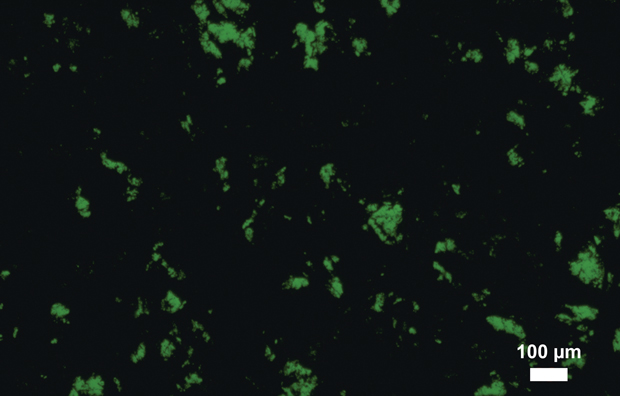Earthquakes are massive events, ruptures of the Earth’s surface that send seismic waves coursing throughout the planet. However, the stresses that build up in advance of an earthquake are concentrated in comparatively tiny regions—rough surfaces of abutting plates that are often no more than a few dozen centimeters across. To a large degree, understanding things such as earthquake timing and onset really boils down to understanding what happens in these small regions of solid contact.
How the fault contact area responds to changing stresses is difficult to measure in the field or in the lab, and researchers often rely on macroscale proxy measurements to infer changes in microscopic properties. In their research, Nagata et al. used an optical technique to peer into a fault system, using high-speed observations to directly measure changes in fault contact area.
Instead of observing a natural fault system made of rock, the authors made a simulated fault out of polymethyl methacrylate (PMMA) plastic. Previous studies showed that the frictional behavior of PMMA plastic is similar to that of rock, and the transparent material allowed the authors to directly observe shifts in the fault contact area as stresses changed. The authors subjected their plastic fault to a range of slip rates, static and dynamic stresses, and timed static holds to study time-dependent healing or strengthening of faults.
In previous research, scientists have used one proxy measurement, fault stiffness, as a stand-in for the microscopic fault contact area. The authors found that when the fault is not sliding, fault stiffness and contact area are linearly related, and one can be used to infer the other. When the fault is moving, however, this linear relationship fades, and the link between stiffness and contact area becomes much more complex, rendering fault stiffness an inappropriate stand-in measurement under most conditions. (Journal of Geophysical Research: Solid Earth, doi:10.1002/2014JB011014, 2014)
© 2014. American Geophysical Union. All rights reserved.
© 2014. American Geophysical Union. All rights reserved.

